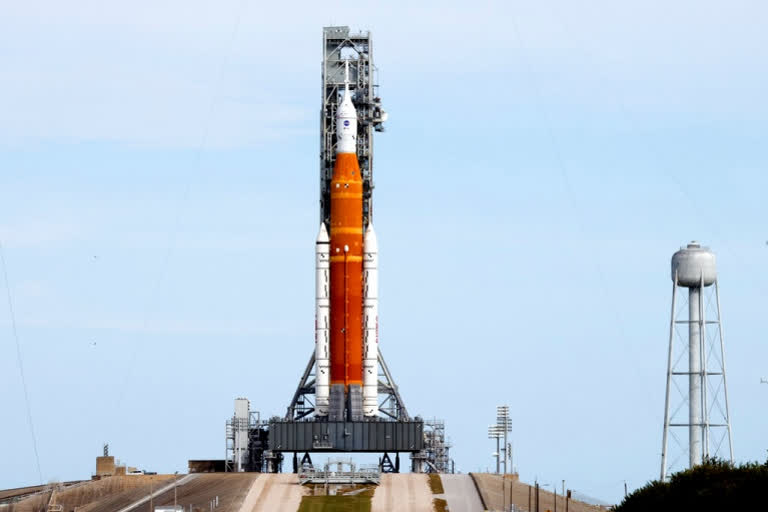Cape Canaveral (Florida, USA): NASA's new moon rocket blasted off on its debut flight with three test dummies aboard early Wednesday, bringing the U.S. a big step closer to putting astronauts back on the lunar surface for the first time since the end of the Apollo program 50 years ago. If all goes well during the three-week, make-or-break shakedown flight, the rocket will propel an empty crew capsule into a wide orbit around the moon, and then the capsule will return to Earth with a splashdown in the Pacific in December.
After years of delays and billions in cost overruns, the Space Launch System rocket thundered skyward, rising from Kennedy Space Center on 8.8 million pounds (4 million kilograms) of thrust and hitting 100 mph (160 kph) within seconds. The Orion capsule was perched on top, ready to bust out of Earth orbit toward the moon not quite two hours into the flight.
The moonshot follows nearly three months of vexing fuel leaks that kept the rocket bouncing between its hangar and the pad. Forced back indoors by Hurricane Ian at the end of September, the rocket stood its ground outside as Nicole swept through last week with gusts of more than 80 mph (130 kph). Although the wind peeled away a 10-foot (3-meter) strip of caulking high up near the capsule, managers gave the green light for the launch.
NASA expected 15,000 to jam the launch site, with thousands more lining the beaches and roads outside the gates, to witness NASA’s long-awaited sequel to Project Apollo, when 12 astronauts walked on the moon from 1969 and 1972. Crowds also gathered outside NASA centers in Houston and Huntsville, Alabama, to watch the spectacle on giant screens.
“For the Artemis generation, this is for you,” launch director Charlie Blackwell-Thompson said shortly before liftoff, referring to young people who were not alive for Apollo. The liftoff marked the start of NASA’s Artemis lunar-exploration program, named after Apollo’s mythological twin sister. The space agency is aiming to send four astronauts around the moon on the next flight, in 2024, and land humans there as early as 2025.
The 322-foot (98-meter) SLS is the most powerful rocket ever built by NASA, with more thrust than either the space shuttle or the mighty Saturn V that carried men to the moon. A series of hydrogen fuel leaks plagued the summertime launch attempts as well as countdown tests. A fresh leak erupted at a new location during Tuesday night's fueling, but an emergency team managed to tighten the faulty valve on the pad. Then a U.S. Space Force radar station went down, resulting in another scramble, this time to replace an ethernet switch.
Also read:NASA's moon rocket on track for Wednesday launch attempt
